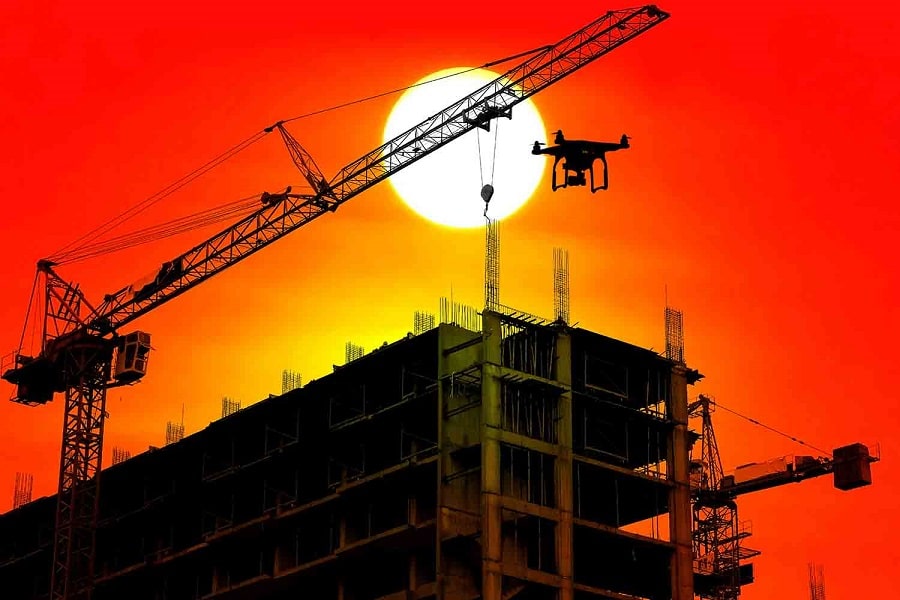8 Emerging Trends
Posted by Howie Scarboro - CEO Fall Protection Distributors, LLC on Nov 27th 2023
In today's dynamic construction industry, the paramount concern is the safety of roof workers. Recent trends in fall protection training highlight a transformative shift toward innovation and heightened safety measures. As companies embrace the safety culture, manufacturers have delivered on safer, more affordable fall protection solutions. This article explores these emerging trends that are reshaping how we approach fall protection in the construction sector.
Advancements in Equipment:
Recent technological advances in fall protection equipment are significant, with harnesses and lanyards now crafted from robust synthetic materials. The industry has witnessed a surge in Personal Fall Protection Systems (PFPS), marking a pivotal shift in providing workers with enhanced protection and adaptability to various work scenarios. This evolution ensures that safety measures keep pace with the demands of modern construction sites. High quality equipment is tested to ensure compliance with OSHA and ANSI guidelines. As more manufacturers enter the market, the competition for newer designs and high-tech materials have created a positive change in the industry.
Incorporating Advanced Designs into Fall Protection:
A noteworthy trend in fall protection is the seamless integration of safety measures into the designs of buildings and structures. This proactive approach ensures that fall protection systems become an inherent and integrated part of the construction process, simplifying their use and minimizing risks. By embedding these measures into the design phase, the industry is taking a preventive stance towards fall-related accidents. A complete re-think of how to work safe on roofs and inside factories should begin during the design phase of the project. Forward thinking for safety solutions can create new concepts that save lives and money by reducing accidents.
Focus on User-Friendly Solutions:
With an increased focus on safety, the industry is placing heightened emphasis on user-friendly fall protection products that require minimal training. Simultaneously, there is a parallel development of height safety solutions, making it easier for workers to adopt and adhere to safety protocols. This trend reflects a commitment to reducing barriers to safety training and ensuring that workers can easily integrate these measures into their daily routines. Multi-lingual markings and instruction manuals, simpler designs that require less training, and an overall streamlined approach to reducing accidents and project costs are the current trend in the industry.
Technological Innovations:
Technology is revolutionizing fall protection training, introducing immersive experiences through Virtual Reality (VR) and Augmented Reality (AR). Apps like Harness Hero video game and PIXO VR Fall Protection provide engaging, risk-free training opportunities. These technologies offer a hands-on approach, allowing workers to practice safety protocols in virtual environments, ensuring a better understanding of the consequences of improper safety procedures without real-world risks.

Drones are also being vertically integrated into the construction safety sector. They have been proven to reduce human risks while reducing inspection costs for companies willing to invest in their implementation. They are being used successfully for not only providing up-to-date images of construction products, but also to aid in the identification of existing fall hazards before workers have even ascended the roof.
Wearable Devices:
The integration of wearable technology into fall protection is a significant stride forward. Smartwatches and specialized safety wearables now monitor biometric data, issue real-time safety alerts, and even detect falls, adding an extra layer of security for workers at heights. These devices not only enhance safety but also contribute to a culture of continuous improvement, where real-time data helps in refining safety protocols based on the actual experiences of workers in the field. There are also numerous fall protection equipment asset tracking and inspection apps available to help ensure compliance.
Online Training Platforms:
Accessibility is a key factor in modern fall protection training, and online platforms play a crucial role in meeting this demand. There are several virtual OSHA Fall Protection Training platforms available that offer flexible training options that can be accessed anytime, anywhere. This not only facilitates ongoing education but also ensures that workers have the tools to identify fall hazards and protect themselves in diverse work environments.
Training Apps:
Mobile applications are transforming how construction crews approach fall protection. The Miller Fall Clearance App, for example, assists in calculating fall distances and swing radii required for effective fall arrest. These apps provide practical tools that workers can use in real-time on construction sites, enhancing the accuracy and efficiency of fall protection measures.
Data and Technology Integration:
Organizations are leveraging data and technology to manage enterprise-wide fall protection programs. Digital map-based tools are being employed for identifying and controlling fall hazards, contributing to a comprehensive safety strategy. This integration of data and technology ensures a proactive and data-driven approach to fall protection, allowing organizations to tailor their safety measures to the specific challenges of their work environments.
In conclusion, as the construction fall protection industry continues to evolve, the integration of technology into training programs stands out as a beacon of progress. By embracing these emerging trends, companies can enhance their fall protection initiatives, reduce the risk of incidents, and ultimately create safer working environments for all. This commitment to innovation and safety reflects a collective effort to ensure that every worker returns home safely from the heights of construction sites.

